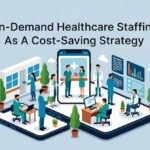When natural disasters, pandemics, or infrastructure failures strike, healthcare systems are often pushed to their limits. In rural and underserved areas, where resources are already stretched thin, the consequences can be especially dire. Disaster preparedness in healthcare is no longer a “nice to have” — it’s a necessity. Over the past few decades, various healthcare leaders and organizations have shared invaluable lessons learned from crises, helping to shape a more resilient system for the future.
Understanding the Stakes
Disasters — whether wildfires, floods, hurricanes, or viral outbreaks — disrupt more than daily life. They jeopardize access to life-saving care. Rural communities face a unique set of challenges: longer distances to hospitals, limited emergency medical personnel, and fewer resources to quickly recover. In these areas, a delayed response can be the difference between life and death.
Healthcare facilities must be equipped not just to continue services during emergencies, but also to act as a central hub for community response. Preparing for these situations requires foresight, training, collaboration, and communication.
Building a Culture of Readiness
One of the key lessons from the field is the importance of embedding a culture of preparedness within healthcare organizations. This means going beyond one-time emergency drills and instead cultivating a mindset that expects the unexpected.
Staff at all levels need clear protocols, regular training, and the confidence to act quickly and effectively under pressure. Checklists, communication trees, and role-specific emergency duties must be rehearsed regularly. Healthcare facilities that succeeded during past disasters often had strong leadership and an ingrained culture of readiness that enabled swift adaptation in chaotic environments.
Leveraging Technology for Early Response
Technology plays a crucial role in disaster preparedness. Real-time alerts, telehealth platforms, cloud-based patient records, and predictive modeling tools allow healthcare providers to anticipate needs, communicate across regions, and maintain patient care continuity.
During the COVID-19 pandemic, many rural clinics rapidly adopted telehealth to continue serving patients despite lockdowns and exposure risks. Lena Esmail, a healthcare executive with extensive experience in rural healthcare innovation, leveraged digital tools to ensure her clinics could remain open and accessible. Her approach highlighted how proactive use of technology can mitigate risk and increase resilience in underserved areas.
Collaborating with Community Partners
Effective disaster preparedness also depends on collaboration beyond clinic walls. Hospitals and health centers must work closely with local government, emergency responders, nonprofit organizations, and other healthcare entities. By forging these relationships before a disaster strikes, response efforts can be coordinated and efficient.
Community-based organizations can also play a role in outreach, especially to vulnerable populations like seniors, people with disabilities, and those without reliable transportation. During an emergency, a well-connected local network can save lives.
One major takeaway from past disaster responses is the power of trust. People are more likely to heed warnings and follow guidance when it comes from a trusted local healthcare provider or community leader. Building these relationships ahead of time can significantly improve outcomes in a crisis.
Stockpiling and Supply Chain Management
In the early days of the pandemic, many healthcare facilities ran dangerously low on PPE, testing kits, and even oxygen. One lesson that emerged was the importance of maintaining an emergency stockpile and having diverse supply chain options. Rural clinics especially must avoid relying on a single vendor or region for critical supplies.
Supply chain resilience is just as important as clinical readiness. Facilities should conduct regular inventory assessments, identify backup suppliers, and coordinate with nearby systems to share resources when needed.
Mental Health Support for Healthcare Workers
Crises take a toll on healthcare workers — physically, mentally, and emotionally. Burnout, anxiety, and PTSD are common during and after disasters. Any disaster plan must include strategies for supporting staff well-being. This could involve mental health counseling, peer support groups, flexible schedules, and time off for recovery.
Healthcare leader Lena Esmail has emphasized the need for mental health support within her own rural clinics, especially during high-stress periods. Protecting the well-being of providers ensures that they can continue to care for others when it matters most.
Learning from Every Crisis
Finally, every disaster is an opportunity to improve. After the initial chaos subsides, healthcare organizations must conduct after-action reviews: What worked? What failed? What could we do better next time?
These reviews should include feedback from frontline staff, community members, and partner organizations. Then, the insights gained should inform future emergency planning, training, and resource allocation.
Looking Ahead
Disasters will always be a part of life. But with proper planning, strong partnerships, and a commitment to adaptability, healthcare systems — even in the most rural regions — can rise to meet the challenge. The lessons from past crises continue to guide the evolution of emergency preparedness, ensuring that when the next disaster strikes, healthcare providers are ready to respond with clarity, compassion, and coordination.
Did you find this helpful? Check out our other helpful articles on our website.
Read Also
- Creative Approaches to Alleviating Healthcare Staff ShortagesHospitals and clinics are facing staff shortages, which makes it harder to take care of patients well. Finding simple and useful solutions is very important. Easy changes like flexible work hours, good training, and chances to grow can help staff stay happy. Technology, like online doctor visits and helpful tools, can make work easier. Smart… Read more: Creative Approaches to Alleviating Healthcare Staff Shortages
- Understanding the Role of Sterilizers in Healthcare FacilitiesHave you ever wondered how hospitals keep their equipment safe enough to use on dozens of patients every day? Most people never think about what happens behind the scenes, yet these hidden steps play a huge role in patient safety. Sterilizers are part of that system, working quietly to remove harmful germs before any instrument… Read more: Understanding the Role of Sterilizers in Healthcare Facilities
- Building Healthcare Access Where It’s Needed Most: A Local First ApproachHealthcare shouldn’t depend on where you live. But in the U.S., it often does. If you’re in a big city, you likely have options. If you’re in a small town or an underserved neighbourhood, it’s a different story. To fix this, more healthcare leaders are turning to a local-first approach. That means putting clinics and… Read more: Building Healthcare Access Where It’s Needed Most: A Local First Approach
- Revolutionizing Patient Engagement: Innovative Solutions for Improved Care and Treatment SuccessNavigating healthcare system can often feel overwhelming for patients. Between appointments, prescriptions, and treatment regimens, it’s easy for crucial details to get lost in the shuffle. That’s why effective patient engagement and support solutions are more important than ever. Companies like Serva Health, with their pharma hub services, are stepping up to ensure that patients… Read more: Revolutionizing Patient Engagement: Innovative Solutions for Improved Care and Treatment Success
- On-Demand Healthcare Staffing As A Cost-Saving StrategyThis is an exciting and challenging time for the healthcare industry. Technology is advancing almost faster than humans can keep pace. New legislation is creating fresh challenges for the future of healthcare, and the shifting population demographic continues to place more pressure on healthcare facilities. Amidst these changes, healthcare facilities are facing a critical staffing… Read more: On-Demand Healthcare Staffing As A Cost-Saving Strategy
- The Benefits of Contract Labor Staffing in HealthcareThe most successful healthcare facilities today aren’t just reacting to crises—they are building workforce resilience to withstand them. Unpredictable patient demand, coupled with persistent nursing shortages, has made the traditional staffing model obsolete. Relying on mandatory overtime to cover a sudden surge in capacity is a recipe for high turnover and rising employee burnout relief… Read more: The Benefits of Contract Labor Staffing in Healthcare
- Management Reinforcement for Healthcare Providers in a Shifting SystemHealthcare is changing faster than ever. So, providers are feeling the pressure to keep up. New technology, changing patient needs, and constant rule updates make it tough for managers to stay on top. Strong leadership helps teams work better, give great care, and stay happy in their jobs. Here’s how healthcare leaders can strengthen their… Read more: Management Reinforcement for Healthcare Providers in a Shifting System
- Why Effective Disinfection Remains the Foundation of Public HealthFrom hospitals and schools to transport hubs and food production sites, disinfection is central to breaking the chain of infection and protecting community health. The COVID-19 pandemic highlighted how crucial surface hygiene and environmental control are in reducing the spread of harmful microorganisms. Yet, beyond emergency response, routine and validated disinfection practices remain the cornerstone… Read more: Why Effective Disinfection Remains the Foundation of Public Health









